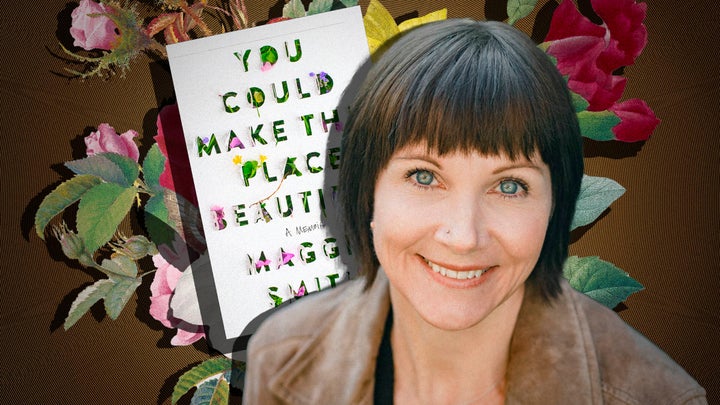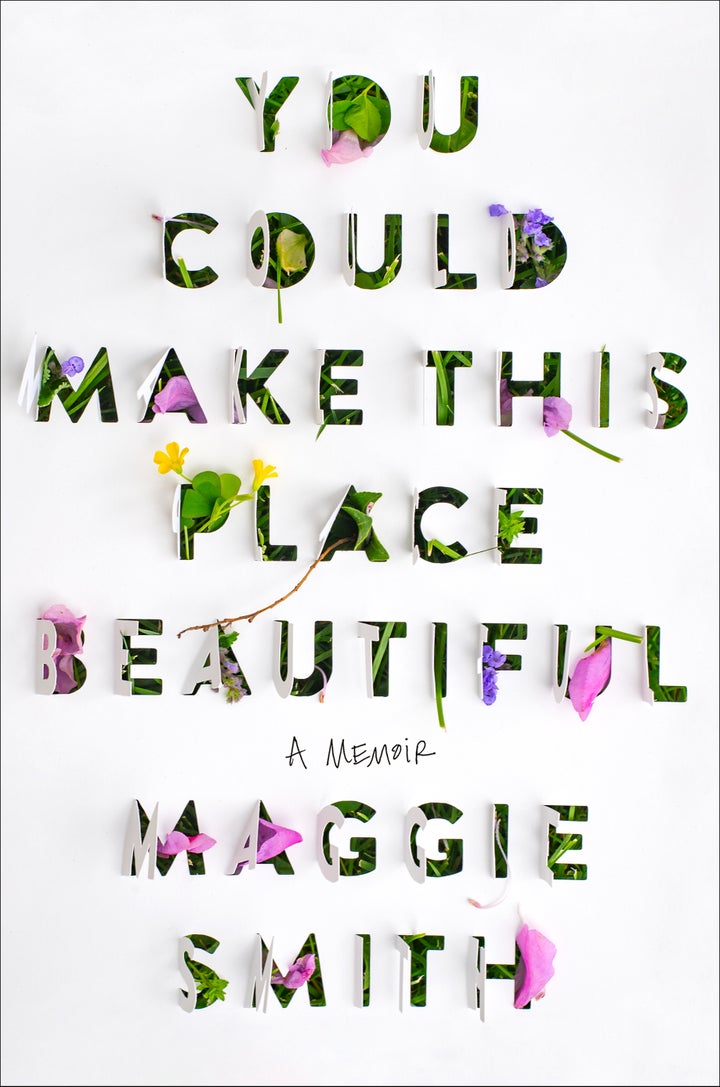
Maggie Smith, an award-winning poet whose previous book “Keep Moving” kept so many of us going during the pandemic and beyond, whose optimism intertwines with the acknowledgment of the feelings that caused us to seek light in the darkness, to begin with, does it again in her memoir “You Could Make This Place Beautiful.”
This is a story of magical thinking. This is a tell-mine, not a tell-all. This is a confrontation of ghosts. This a divorce memoir that is about so much more than divorce.
Smith writes in a way that, at one glance, breaks our hearts and, the next, causes us to clutch our chests in recognition. But then, she makes you reread that sentence again and declare out loud, I know exactly how that feels. And reminds us how comforting it is to not feel alone.
When Smith’s poem “Good Bones” goes viral, something in her marriage shifts. And when a gut-wrenching discovery is made through a pinecone and a postcard, she embarks on a journey of self-discovery and reflection as she seeks answers, understanding, forgiveness and peace.
Through lyrical vignettes, Smith brings readers with her, sometimes addressing us directly as an invitation into the intimacy of her thought process as she explores the meanings behind womanhood, gender roles, family and jobs. Mixed in with a peppering of relevant quotes by others, repeating chapter titles allow her to examine her divorce from various perspectives, such as “The Play,” where she inserts herself as a character in a screenplay, “A Note On,” in which she compares her own story to literary elements of story-writing, and “Some people ask” where she vents about how she could answer the uncomfortable questions people ask her juxtaposed with the easier, polite answers.

My divorce nearly a decade ago and its inciting incident, settings and foreshadowing looked completely different and the same as Smith’s. While my plot didn’t involve a pinecone and a postcard, it did circle around an identity I didn’t realise I was missing, antiquated views of gender roles and conflict over what “work” means and how my “work” that didn’t bring home as much money as his work did affect our family. It also included the post-divorce work – yes, that word is an essential thread here – I put into myself, into finding that lost identity through therapy, through writing, through friendships, through lanterns that clear paths through the darkness. Like Smith, my self-love and respect guided me, my fierce need to protect my children and my determination to create something beautiful after deep loss.
Smith makes sure to tell us, “This isn’t the story of a good wife and a bad husband,” and that this memoir is a tell-mine, not a tell-all, because this is her point of view. There is no omniscient narrator. That honesty, kindness and empathy combine with her poetic writing to keep us turning pages, trusting she’ll reveal what we need to know and maintain a bubble of privacy around what we don’t, trusting her as we nod along because we see snapshots of ourselves in her.
Of course, as a divorced woman with not-so-distant memories of life as a single mother, I related to Smith’s struggles navigating legal documents, co-parenting, and explanations to friends and family. But I related even more to how she considered herself “cleverly disguised as one of the least visible creatures on earth: a middle-aged mother.” Because even if we feel invisible by society as middle-aged mothers (or women in general), we’d hope that our spouse would be the one person who still sees us, sees every layer of us, who reminds us we’re not invisible. Like my then-husband, Smith’s husband couldn’t seem to see any other layer than the role he thought she was supposed to play at home as a wife and a mother.
“Even if we feel invisible by society as middle-aged mothers (or women in general), we’d hope that our spouse would be the one person who still sees us, sees every layer of us, who reminds us we’re not invisible.”
She wrote a poem that went viral, and it was featured on a popular television show where it was publicly read aloud by Meryl Streep. Yet, her husband still didn’t value her work, didn’t value the rewards and recognition she earned from her work, and didn’t value not only the fact that she accomplished something great but that she accomplished something great while simultaneously being a mother and a wife. This primary caregiver role seems to be expected of us as women. Her husband failed to see her layers and understand the imbalance of the division of labor in their home. Instead, what her husband chose to see was his wife shirking her duties to pursue her own successes, passions, and work that he didn’t consider to be as valuable as his.
“What would I have done to save my marriage?” Smith wrote. “I would have abandoned myself, and I did, for a time. I would have done it for longer if he’d let me.”
Who hasn’t lost themselves, temporarily or long term, in another person they love? We adopt mannerisms, food preferences, and music tastes just by the mere fact of proximity. Those aren’t life-changing. What’s life-changing is the gradual shrinking of ourselves as the other person grows larger, changes imperceptible by the naked eye on a daily basis but, once realized, are so massive we can’t believe we didn’t see it when we looked in the mirror. It happened to me in my marriage. It happened to Maggie Smith in hers. And at some point, we both reached the same conclusion: “I’d been trying to save the marriage, but I needed to save myself.”
At times, we readers want to jump inside the pages of this book and give Smith a sympathetic hug. At others, we wish to high-five her in solidarity for verbalising what many can’t. But more than anything, we want to thank her. Thank her for speaking her truth, a truth many of us know well. Thank her for sharing her journey, especially for those of us who have faced similar dark paths or are about to grab our lanterns to clear a path in the darkness we’re just now facing. And thank her for her realistic optimism because we immediately know this memoir is about optimism when we open the book.
“I’ve had to move into — and through — the darkness to find the beauty.” Smith writes on page one. “Spoiler alert: It’s there. The beauty’s there.”
And she’s right. The beauty is certainly there.